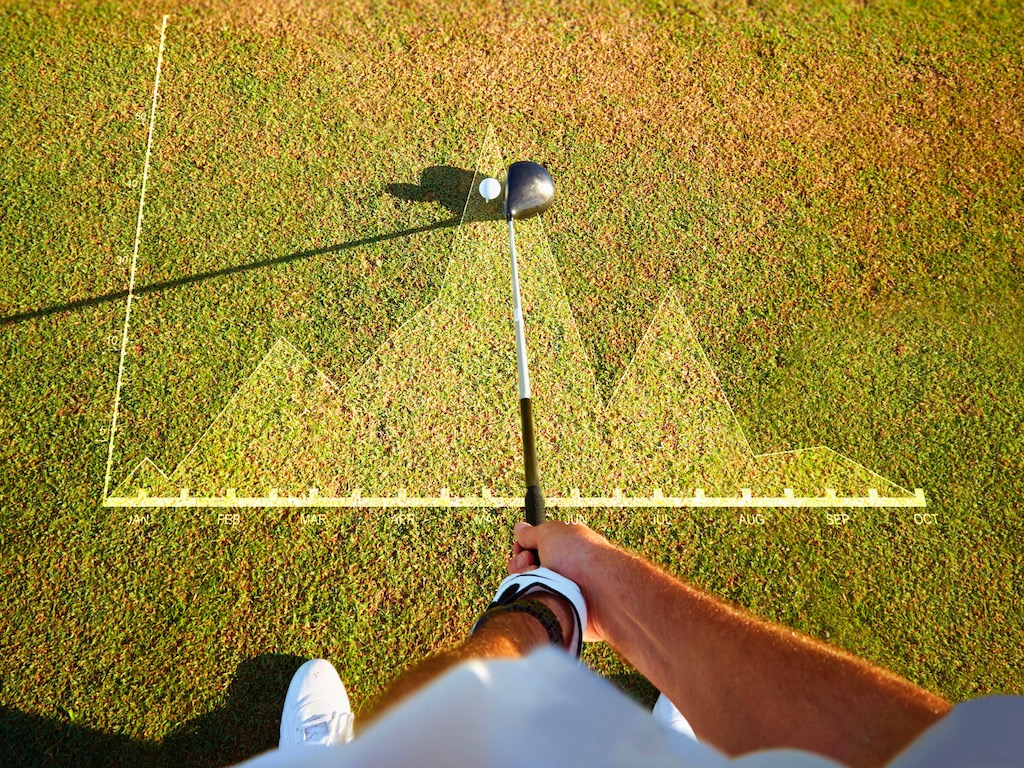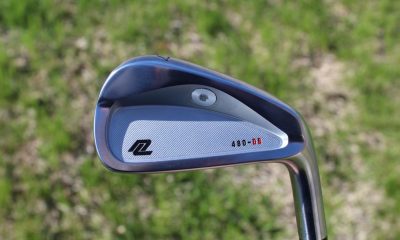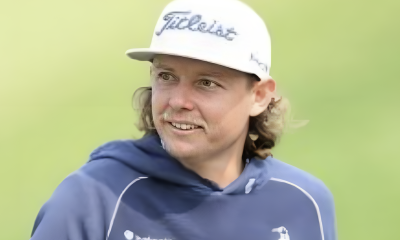Opinion & Analysis
Stats! What are they good for?

For years the world of golf has attempted to quantify the game with the idea that data will somehow improve the experience and provide information as to what and how to improve performance. The various professional tours have invested millions of dollars in order to gather the data that can be boiled down into about 600 statistical categories. Those of us not affiliated with professional tours are encouraged to gather, record and keep our own stats so that we too can improve our golfing experience and provide a basis for improving our games.
And now, many years later we have Greens in Regulation, Driving Distance, Driving Accuracy, Putts Made from every conceivable distance, Proximity to the Hole from every conceivable distance and a whole range of analysis based upon the advanced notion of “Shots Gained.” Some of these stats have added to the experience, but none of them have actually helped most of us improve our games.
And why is that?
For example, if a player had 27 putts in a round, what did he/she shoot? Meanwhile, Phil Michelson shot a 59 to win the 2004 PGA Grand Slam of Golf hitting only three fairways. And, how is missing a fairway by inches automatically a negative while hitting a green leaving a 90-foot putt a good thing?
Instead of beating up on all of the unnecessary and unproductive stats and all of the data points necessary to base averages and the like, I will share with you the one single most useful and helpful stat that I have used and tested — and it only requires a binary response. A simple “Yes” or “No” to the question: “Did the shot produce the result that I tried to produce?”
- For the beginning player, getting the ball off the ground and going generally in the right direction for some acceptable distance would be a “Yes” answer.
- For the high-handicap player, getting the ball off the ground and going generally in the right direction for some acceptable distance without going out of bounds or into a hazard would be a “Yes” answer.
- For the middle-handicap player, a shot that has the general appearance of correctness without going out of bounds or into a hazard would be a “Yes” answer.
For the low-handicap or professional player, more specific definitions or targets are necessary. Meaning, does the ball flight have the “General Appearance of Correctness” (GAC) and is the ball coming to rest within the intended target area. “GAC” refers to direction, trajectory, distance and curve. The better the player, the more exact would be the standard for GAC. For your general information, “targets” are stated objectives into which the player desires the ball to come to rest.
I define targets as:
- Large Target: a “box” being 40 yards wide and as deep as desired (a rectangle, a parallelogram or a square)
- Small Target: an area* having a radius of 10 yards or 30 feet
- Scoring Target: an area having a radius of 10 feet
- Short Game Scoring Target: an area having a radius of 3 feet
*Note: Areas are defined as having the shape of a circle, a semi-circle, a triangle or a fan
As a point of interest, it isn’t usually necessary or desirable to define targets in more definitive terms. You may have noticed that there wasn’t any references to the pin, the green, the fairway or the hole. They may or may not be considerations when targeting, and they may or may not be within the boundaries of the actual targets!
“Byron [Nelson] said that the secret to playing Augusta National was to play to the green, not the pins,” Ben Hogan said after his 1942 playoff loss to Nelson at the Masters.
I concede that there are a few major flaws to this system. First, the player is required to be honest. Second, the player is required to record all of the “No” answers onto a “scorecard” that then becomes a permanent record for that round. Third, the player must determine if the “No’s” were a result of bad decision making or substandard execution. Finally, the player must schedule and then do both the physical and mental practice that turns the “No’s” into “Yeses.”
So, what percentage of the time is a player in the right position for the shot about to be played, how is the right position determined, and how does being in the correct position actually effect scoring? A topic for another time.
Ready to get started? I will email you the scorecard I use by request. Contact me at [email protected].
- LIKE34
- LEGIT3
- WOW1
- LOL3
- IDHT0
- FLOP0
- OB0
- SHANK24
19th Hole
Vincenzi’s 2024 Zurich Classic of New Orleans betting preview

The PGA TOUR heads to New Orleans to play the 2023 Zurich Classic of New Orleans. In a welcome change from the usual stroke play, the Zurich Classic is a team event. On Thursday and Saturday, the teams play best ball, and on Friday and Sunday the teams play alternate shot.
TPC Louisiana is a par 72 that measures 7,425 yards. The course features some short par 4s and plenty of water and bunkers, which makes for a lot of exciting risk/reward scenarios for competitors. Pete Dye designed the course in 2004 specifically for the Zurich Classic, although the event didn’t make its debut until 2007 because of Hurricane Katrina.
Coming off of the Masters and a signature event in consecutive weeks, the field this week is a step down, and understandably so. Many of the world’s top players will be using this time to rest after a busy stretch.
However, there are some interesting teams this season with some stars making surprise appearances in the team event. Some notable teams include Patrick Cantlay and Xander Schauffele, Rory McIlroy and Shane Lowry, Collin Morikawa and Kurt Kitayama, Will Zalatoris and Sahith Theegala as well as a few Canadian teams, Nick Taylor and Adam Hadwin and Taylor Pendrith and Corey Conners.
Past Winners at TPC Louisiana
- 2023: Riley/Hardy (-30)
- 2022: Cantlay/Schauffele (-29)
- 2021: Leishman/Smith (-20)
- 2019: Palmer/Rahm (-26)
- 2018: Horschel/Piercy (-22)
- 2017: Blixt/Smith (-27)
2024 Zurich Classic of New Orleans Picks
Tom Hoge/Maverick McNealy +2500 (DraftKings)
Tom Hoge is coming off of a solid T18 finish at the RBC Heritage and finished T13 at last year’s Zurich Classic alongside Harris English.
This season, Hoge is having one of his best years on Tour in terms of Strokes Gained: Approach. In his last 24 rounds, the only player to top him on the category is Scottie Scheffler. Hoge has been solid on Pete Dye designs, ranking 28th in the field over his past 36 rounds.
McNealy is also having a solid season. He’s finished T6 at the Waste Management Phoenix Open and T9 at the PLAYERS Championship. He recently started working with world renowned swing coach, Butch Harmon, and its seemingly paid dividends in 2024.
Keith Mitchell/Joel Dahmen +4000 (DraftKings)
Keith Mitchell is having a fantastic season, finishing in the top-20 of five of his past seven starts on Tour. Most recently, Mitchell finished T14 at the Valero Texas Open and gained a whopping 6.0 strokes off the tee. He finished 6th at last year’s Zurich Classic.
Joel Dahmen is having a resurgent year and has been dialed in with his irons. He also has a T11 finish at the PLAYERS Championship at TPC Sawgrass which is another Pete Dye track. With Mitchell’s length and Dahmen’s ability to put it close with his short irons, the Mitchell/Dahmen combination will be dangerous this week.
Taylor Moore/Matt NeSmith +6500 (DraftKings)
Taylor Moore has quickly developed into one of the more consistent players on Tour. He’s finished in the top-20 in three of his past four starts, including a very impressive showing at The Masters, finishing T20. He’s also finished T4 at this event in consecutive seasons alongside Matt NeSmith.
NeSmith isn’t having a great 2024, but has seemed to elevate his game in this format. He finished T26 at Pete Dye’s TPC Sawgrass, which gives the 30-year-old something to build off of. NeSmith is also a great putter on Bermudagrass, which could help elevate Moore’s ball striking prowess.
- LIKE6
- LEGIT1
- WOW1
- LOL0
- IDHT0
- FLOP2
- OB1
- SHANK1
19th Hole
Vincenzi’s 2024 LIV Adelaide betting preview: Cam Smith ready for big week down under

After having four of the top twelve players on the leaderboard at The Masters, LIV Golf is set for their fifth event of the season: LIV Adelaide.
For both LIV fans and golf fans in Australia, LIV Adelaide is one of the most anticipated events of the year. With 35,000 people expected to attend each day of the tournament, the Grange Golf Club will be crawling with fans who are passionate about the sport of golf. The 12th hole, better known as “the watering hole”, is sure to have the rowdiest of the fans cheering after a long day of drinking some Leishman Lager.
The Grange Golf Club is a par-72 that measures 6,946 yards. The course features minimal resistance, as golfers went extremely low last season. In 2023, Talor Gooch shot consecutive rounds of 62 on Thursday and Friday, giving himself a gigantic cushion heading into championship Sunday. Things got tight for a while, but in the end, the Oklahoma State product was able to hold off The Crushers’ Anirban Lahiri for a three-shot victory.
The Four Aces won the team competition with the Range Goats finishing second.
*All Images Courtesy of LIV Golf*
Past Winners at LIV Adelaide
- 2023: Talor Gooch (-19)
Stat Leaders Through LIV Miami
Green in Regulation
- Richard Bland
- Jon Rahm
- Paul Casey
Fairways Hit
- Abraham Ancer
- Graeme McDowell
- Henrik Stenson
Driving Distance
- Bryson DeChambeau
- Joaquin Niemann
- Dean Burmester
Putting
- Cameron Smith
- Louis Oosthuizen
- Matt Jones
2024 LIV Adelaide Picks
Cameron Smith +1400 (DraftKings)
When I pulled up the odds for LIV Adelaide, I was more than a little surprised to see multiple golfers listed ahead of Cameron Smith on the betting board. A few starts ago, Cam finished runner-up at LIV Hong Kong, which is a golf course that absolutely suits his eye. Augusta National in another course that Smith could roll out of bed and finish in the top-ten at, and he did so two weeks ago at The Masters, finishing T6.
At Augusta, he gained strokes on the field on approach, off the tee (slightly), and of course, around the green and putting. Smith able to get in the mix at a major championship despite coming into the week feeling under the weather tells me that his game is once again rounding into form.
The Grange Golf Club is another course that undoubtedly suits the Australian. Smith is obviously incredibly comfortable playing in front of the Aussie faithful and has won three Australian PGA Championship’s. The course is very short and will allow Smith to play conservative off the tee, mitigating his most glaring weakness. With birdies available all over the golf course, there’s a chance the event turns into a putting contest, and there’s no one on the planet I’d rather have in one of those than Cam Smith.

Louis Oosthuizen +2200 (DraftKings)
Louis Oosthuizen has simply been one of the best players on LIV in the 2024 seas0n. The South African has finished in the top-10 on the LIV leaderboard in three of his five starts, with his best coming in Jeddah, where he finished T2. Perhaps more impressively, Oosthuizen finished T7 at LIV Miami, which took place at Doral’s “Blue Monster”, an absolutely massive golf course. Given that Louis is on the shorter side in terms of distance off the tee, his ability to play well in Miami shows how dialed he is with the irons this season.
In addition to the LIV finishes, Oosthuizen won back-to-back starts on the DP World Tour in December at the Alfred Dunhill Championship and the Mauritus Open. He also finished runner-up at the end of February in the International Series Oman. The 41-year-old has been one of the most consistent performers of 2024, regardless of tour.
For the season, Louis ranks 4th on LIV in birdies made, T9 in fairways hit and first in putting. He ranks 32nd in driving distance, but that won’t be an issue at this short course. Last season, he finished T11 at the event, but was in decent position going into the final round but fell back after shooting 70 while the rest of the field went low. This season, Oosthuizen comes into the event in peak form, and the course should be a perfect fit for his smooth swing and hot putter this week.

- LIKE10
- LEGIT2
- WOW0
- LOL0
- IDHT0
- FLOP0
- OB0
- SHANK0
Opinion & Analysis
The Wedge Guy: What really makes a wedge work? Part 1

Of all the clubs in our bags, wedges are almost always the simplest in construction and, therefore, the easiest to analyze what might make one work differently from another if you know what to look for.
Wedges are a lot less mysterious than drivers, of course, as the major brands are working with a lot of “pixie dust” inside these modern marvels. That’s carrying over more to irons now, with so many new models featuring internal multi-material technologies, and almost all of them having a “badge” or insert in the back to allow more complex graphics while hiding the actual distribution of mass.
But when it comes to wedges, most on the market today are still single pieces of molded steel, either cast or forged into that shape. So, if you look closely at where the mass is distributed, it’s pretty clear how that wedge is going to perform.
To start, because of their wider soles, the majority of the mass of almost any wedge is along the bottom third of the clubhead. So, the best wedge shots are always those hit between the 2nd and 5th grooves so that more mass is directly behind that impact. Elite tour professionals practice incessantly to learn to do that consistently, wearing out a spot about the size of a penny right there. If impact moves higher than that, the face is dramatically thinner, so smash factor is compromised significantly, which reduces the overall distance the ball will fly.
Every one of us, tour players included, knows that maddening shot that we feel a bit high on the face and it doesn’t go anywhere, it’s not your fault.
If your wedges show a wear pattern the size of a silver dollar, and centered above the 3rd or 4th groove, you are not getting anywhere near the same performance from shot to shot. Robot testing proves impact even two to three grooves higher in the face can cause distance loss of up to 35 to 55 feet with modern ‘tour design’ wedges.
In addition, as impact moves above the center of mass, the golf club principle of gear effect causes the ball to fly higher with less spin. Think of modern drivers for a minute. The “holy grail” of driving is high launch and low spin, and the driver engineers are pulling out all stops to get the mass as low in the clubhead as possible to optimize this combination.
Where is all the mass in your wedges? Low. So, disregarding the higher lofts, wedges “want” to launch the ball high with low spin – exactly the opposite of what good wedge play requires penetrating ball flight with high spin.
While almost all major brand wedges have begun putting a tiny bit more thickness in the top portion of the clubhead, conventional and modern ‘tour design’ wedges perform pretty much like they always have. Elite players learn to hit those crisp, spinny penetrating wedge shots by spending lots of practice time learning to consistently make contact low in the face.
So, what about grooves and face texture?
Grooves on any club can only do so much, and no one has any material advantage here. The USGA tightly defines what we manufacturers can do with grooves and face texture, and modern manufacturing techniques allow all of us to push those limits ever closer. And we all do. End of story.
Then there’s the topic of bounce and grinds, the most complex and confusing part of the wedge formula. Many top brands offer a complex array of sole configurations, all of them admittedly specialized to a particular kind of lie or turf conditions, and/or a particular divot pattern.
But if you don’t play the same turf all the time, and make the same size divot on every swing, how would you ever figure this out?
The only way is to take any wedge you are considering and play it a few rounds, hitting all the shots you face and observing the results. There’s simply no other way.
So, hopefully this will inspire a lively conversation in our comments section, and I’ll chime in to answer any questions you might have.
And next week, I’ll dive into the rest of the wedge formula. Yes, shafts, grips and specifications are essential, too.
- LIKE31
- LEGIT7
- WOW1
- LOL1
- IDHT2
- FLOP3
- OB1
- SHANK3
-

 19th Hole2 weeks ago
19th Hole2 weeks agoDave Portnoy places monstrous outright bet for the 2024 Masters
-

 19th Hole2 weeks ago
19th Hole2 weeks agoTiger Woods arrives at 2024 Masters equipped with a putter that may surprise you
-

 19th Hole15 hours ago
19th Hole15 hours ago‘Absolutely crazy’ – Major champ lays into Patrick Cantlay over his decision on final hole of RBC Heritage
-

 19th Hole3 weeks ago
19th Hole3 weeks agoReport: Tiger Woods has ‘eliminated sex’ in preparation for the 2024 Masters
-

 19th Hole1 week ago
19th Hole1 week agoTwo star names reportedly blanked Jon Rahm all week at the Masters
-

 19th Hole7 days ago
19th Hole7 days agoReport: LIV Golf identifies latest star name they hope to sign to breakaway tour
-

 19th Hole1 week ago
19th Hole1 week agoNeal Shipley presser ends in awkward fashion after reporter claims Tiger handed him note on 8th fairway
-

 19th Hole6 days ago
19th Hole6 days agoBrandel Chamblee has ‘no doubt’ who started the McIlroy/LIV rumor and why





















3puttPar
Jul 29, 2018 at 1:08 pm
Stats! What are they good for? CONFUSING THE AVERAGE GOLFER leading them to poor practice routines, if they even practice.
DaveyD
Jul 29, 2018 at 9:39 am
My goal to to make greens in regulation. This one stat means I’m staying out of trouble & avoiding penalty strokes. It’s giving me the best chance for a par or sub-par. I don’t track it, I simply know if I make it or I don’t and where the extra strokes came from.
CrashTestDummy
Jul 28, 2018 at 1:31 pm
It is good to keep track of putts, gir, fairways hit, and proximity to the hole. However, at the end of the day the score is what counts. Most tour pros know and high level golfers where they are losing strokes.
Adam
Jul 28, 2018 at 11:55 am
I agree with everything here but technically… turning “No’s into Yeses” requires some sort of stats, right? Maybe not actually tracking and analyzing numbers but to get better, you must eventually improve the areas of the game referred to as “stats.”
Mike
Jul 28, 2018 at 9:13 am
I used to keep tons of stats (I work w/ # so it’s a habit). I ditched all that except for 1 stat…what did I shoot. # of putts is a fairly useless stat. If u hit every green in regulation & 2-putted each, you have 36 putts & shoot par. If you missed every green but got up & down every time, you shoot par w/ 18 putts. Which is better? At some point, after playing for a few years, you should know your game, meaning, where you s/b focusing on for improvement.
Blaise
Jul 28, 2018 at 1:01 pm
Still pretty useful, isn’t it?
If you had 18 GIR and 36 putts you can be fairly sure that your game from the tee box is solid (hard to hit greens when behind the trees) and thus your wedge game and putting is where you should focus your efforts.
Conversely if you get up and down that often you know it’s the longer clubs.
But, I mostly agree. The stats aren’t always a perfect indicator as there is much nuance.
Frankie
Jul 28, 2018 at 6:07 pm
Why would you need to work on your wedge game if you are already hitting 18 GIR’s…? Strokes gained around the green offers the lowest strokes gained out of any strokes gained categories so therefore it is the most negligible part of the game to work on; not to mention the short game is so random on the course because they are a result of misses that there is no way to practice it off the course without making it block practice, which is the wrong way to practice such a random part of the game. Everyone is better off practicing from the driving range and putting green and then practice their short game creativity while playing on the course.
Prime21
Jul 27, 2018 at 11:54 pm
Thanks for saying it again, not sure what would have happened w/o your approval.
R k
Jul 27, 2018 at 6:50 pm
I will say it again.. Ed Myers produces the best golf improvement articles on this or any other golf outlet.
While I have not used his scorecard(s) specifically, I have heeded only some of his advice on and off course and have had my best rounds ever this year, multiple rounds not just one.